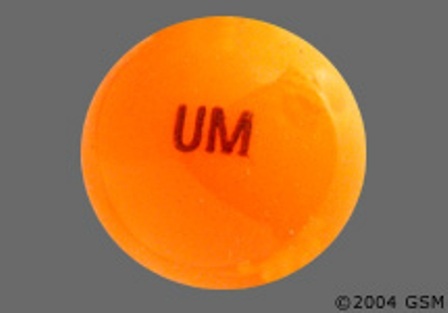 Since the Oregon Supreme Court ruled in April that employers could fire valid medical marijuana users, there remains one FDA-approved prescription drug that contains some elements of cannabis -- Marinol.
Since the Oregon Supreme Court ruled in April that employers could fire valid medical marijuana users, there remains one FDA-approved prescription drug that contains some elements of cannabis -- Marinol.
It's a pill made of 100 percent synthetic tetrahydrocannabinol – the most psychoactive active ingredient in marijuana – and whose use is actually protected by the Americans with Disabilities Act.
The Skanner Video click here
But while the way federal law treats marijuana and Marinol couldn't be more different, the way that both products might affect workplace safety are nearly identical. And ironically, research indicates that herbal marijuana might actually be less debilitating to patients and better for many medical conditions than its synthetic, FDA-approved sister Marinol.
On April 14, the Oregon Supreme Court struck down a lower court's decision that Emerald Steel discriminated against an employee who tested positive for marijuana use, but was a valid Oregon Medical Marijuana Program cardholder.
The Bureau of Labor and Industries, which represented the fired employee, argued that the Americans with Disabilities Act protected users of marijuana, so long as they were complying with state law. The high court disagreed, arguing that the federal Controlled Substances Act made it clear the employee was engaged in the "illegal use of drugs."
Pictured: An Oregon State Police trooper arrested a Santa Barbara man Nov. 4, 2009, on drug-related charges during a traffic stop north of Brooks after approximately 40 lbs. of marijuana, left, was found inside the car. |
A Drug-Free Workplace
The 1971 Controlled Substances Act set up a scheduling system for all drugs – Schedules I through V. Schedule I drugs have no recognized medical use; Schedule II through V classify substances based on their perception of abuse and accepted medical use.
The court specifically pointed to marijuana's Schedule I classification as a reason it did not qualify for the exemption outlined in Oregon State Law:
"'Illegal use of drugs' means any use of drugs, the possession or distribution of which is unlawful under state law or under the federal Controlled Substances Act, 21 U.S.C.A. 812, as amended, but does not include the use of a drug taken under supervision of a licensed health care professional, or other uses authorized under the Controlled Substances Act or under other provisions of state or federal law."
The Skanner Video click here
While federal law may preempt state law, the scheduling of marijuana as a drug that has no medical benefit is anything but settled science. Even the two federal regulatory agencies that have control over the scheduling system have a double standard when it comes to cannabis.
Dronabinol (the scientific name of Marinol) is listed in Schedule III. It contains a synthetic copy of Delta-9 THC, the ingredient that produces the "high" in marijuana, and the chemical that has been most often cited by the DEA and the Office of National Drug Control Policy to be the "dangerous" part of the plant due to the alleged increases in the amount of THC contained in marijuana plants since the 1970s. Despite a 1988 ruling by DEA Administrative Law Judge Francis Young that recommended rescheduling marijuana out of Schedule I, the DEA has continuously blocked the ongoing effort to make the federal government recognize the therapeutic effects of marijuana.
But even the DEA has a hard time explaining to the public why they continue to block the rescheduling of cannabis into something other than Schedule I.
Hypocrisy? Or Science?
"Every molecule of THC has identical physical and chemical properties and produces identical psychoactive effects, regardless of whether it was formed in nature or by laboratory synthesis," stated the Drug Enforcement Administration on its 2003 website. "Likewise, a product that contains THC in a given formulation will cause the same reaction to the human who ingests it regardless of whether the THC is natural or synthetic … THC meets the criteria for classification in schedule I of the CSA. It is an hallucinogenic substance with a high potential for abuse and no currently accepted medical use … There are no FDA-approved drug products that consist solely of THC. However, as stated in the preceding footnote, the FDA has approved a drug product (Marinol[reg]), which contains synthetic THC with other ingredients in a specified product formulation."
The DEA was also responsible for moving Marinol from Schedule II to Schedule III, which made it easier for doctors to prescribe the Unimed Pharmaceutical-manufactured drug.
Despite having some of the same chemical composition as herbal, unmanufactured marijuana, Emerald Steel would have the responsibility to make accommodations for its Marinol-prescribed employees.
 "Normally, if an individual had pain medication for a condition," says Bob Estabrook, of the Bureau of Labor and Industries. "the employer is expected to accommodate the disability."
"Normally, if an individual had pain medication for a condition," says Bob Estabrook, of the Bureau of Labor and Industries. "the employer is expected to accommodate the disability."
That accommodation would not include allowing an employee to operate heavy machinery while under the influence of a debilitating medication, says Dr. Zane Horowitz, the medical director of the Oregon Poison Center at OHSU. But employers are required to engage in a "meaningful interactive process" to reasonably accommodate a medication schedule, according to Estabrook.
What it comes down to is legal and medical semantics. The Oregon Medical Marijuana Act does not allow a physician to write a prescription for marijuana, like they can for Marinol. Physicians can only give patients a recommendation that marijuana might provide relief from various ailments.
Physicians can prescribe drugs for off-label uses, says Horowitz, but the Oregon Medical Marijuana Act – as well as the prohibitive federal laws – restrict doctors from recommending marijuana for ailments not explicitly allowed under the law.
Herbal Cannabis vs. Marinol
According to Horowitz, the effects between prescription Marinol and herbal cannabis are "very similar."
"To older people with no experience with marijuana, they often feel discombobulated and disoriented (with Marinol)," he told The Skanner News. "With someone who's smoked marijuana, there's no difference with how they react."
New research suggests marijuana's complex chemical structure actually might make it a more pleasant, effective and safer drug than Marinol.
According to Dr. William Courtney, a California medical doctor who teaches courses in clinical cannabis, there is a growing body of research that indicates cannabis with large amounts of Cannabidiol (CBD) and other phytocannabinoids may be more effective in treating certain illnesses than THC alone. And unlike THC, CBD and the other numerous cannabinoids present in marijuana don't produce the impairing effects produced by pure THC.
In fact, numerous studies dating back to the 1970s have shown that CBD potentially acts as an antagonist to THC – that is, when THC tries to activate in the brain's cannabinoid receptors, CBD doesn't let it. Courtney has been recommending his patients eat raw marijuana, which will allow the non-psychoactive cannabinoids to interact with the brain's cannabinoid receptors, but will not be an effective way for THC to reach the brain. He says this only works in some patients, as THC has tremendous medical benefits.
In a recent radio interview on "Radio Curious with Barry Vogel" Courtney says CBD is the only cannabinoid that is anti-anxiety, anti-psychotic and an analgesic.
"There's an incredible diversity that is beginning to be available and will tailor the plant to individual needs," said Courtney.
He expects California to soon have numerous labs that will be able to chemically analyze samples of marijuana to determine the different levels of cannabinoids, thereby allowing patients and growers to list a set of "ingredients" for each different strain.
If this does indeed happen, it will answer one of the criticisms many doctors hold against herbal cannabis. OHSU's Zane Horowitz said doctors and pharmacists prefer to prescribe medication with exactly the same dose each time. With Marinol, he says, it's manufactured and the exact content of THC is known with each pill.
Pill vs Herb?
But while having an exact dose is preferable, marijuana is safe enough that patients don't need direct monitoring, Horowitz said. Unlike even nicotine or alcohol, it is officially recognized that it would take 1,000 times the amount needed for impairment to induce an overdose. Even then, there has never been a recorded instance of cannabis overdose in a human.
What's more important, says Horowitz, is the effect.
"Is it producing the effect the patient wants," he said. "Is it being alleviated? Hopefully, the patient and doctor can talk about how it's working."
He said many pharmacological agents need constant monitoring and adjustment and says very few medical marijuana cardholders get monitored adequately by their referring physicians. It could be because of the lack of doctors – or perceived lack of doctors --who will recommend patients for cards. Even OHSU has a policy against recommending herbal medical marijuana.
One of the main criticizes leveled at Marinol from many medical marijuana users who have tried it, is that it takes up to an hour and a half to take effect and the debilitating effects can be overpowering for some users. Marijuana that is inhaled, on the other hand, takes effect within five to 10 minutes and the dose can be much easier to increase immediately.
According to the LA Cannabis Research Center, inhaled marijuana dissipates in an hour to about 10 percent of its presence in the blood stream. Unimed says its Marinol product lasts four to six hours.
Although not available in the United States, Sativex is a liquid synthetic version of marijuana that contains an equal combination of THC and cannabidiol. It has been approved by Health Canada for certain uses. Since 2006, it has been undergoing clinical trials authorized by the FDA.
According to GW Pharmaceuticals, it will be marketed by Otsuka if it is approved for use in the United States. And considering the safety record of the drug in Canada – it might only be the conflicting political difficulties of getting an exact replica of marijuana in Schedule III, while continuing to keep the world's most popular psychotropic drug in Schedule I.
ORNORML: Patients Worried About Jobs
Madeline Martinez, the executive director of the Oregon chapter of the National Organization for the Reform of Marijuana Laws, says she's had a deluge of calls from patients concerned about their jobs.
Her answer?
"I suggest they try to get Marinol," she told The Skanner News.
But she says many patients report to her that Marinol is not as effective as herbal cannabis in relieving symptoms to a variety of illnesses. She says it's also much more expensive than getting donated marijuana from a registered caregiver grower. She says the way Marinol makes many patients feel pales in comparison to the herbal variety.
"Most want to be legal," she says. "But they're afraid for their jobs."
Martinez says there is currently a problem with the system of medical marijuana – there isn't a clear go-to guide that can recommend specific strains for specific illnesses. For many patients, it's a trial and error process that can be timely and expensive. If they grow a variety that won't work for their fibromyalgia, for example, that patient has wasted weeks growing the wrong kind of medicine.
Oregon NORML is currently in the process of creating a system to link symptoms with strains.
"We decided to do strain evaluations to determine what works best," she said.
They are conducting blind tests with patients to see what works best with them, similar to what many labs are starting to do in California. Soon, the days of labeling strains with names straight out of the underground stoner culture – Blueberry Kush or AK-47 – might be replaced with a system that is friendlier to patients finding marijuana specific to their glaucoma, menstrual cramps or nausea.
For further reading about the cannabis plant, try these books:
Marijuana is Safer: So Why Are We Driving People to Drink?
By Steve Fox, Paul Armentano and Mason Tvert
 Nationally recognized marijuana-policy experts compare and contrast the relative harms and legal status of the two most popular recreational substances in the world--marijuana and alcohol. Through an objective examination of the two drugs and the laws and social practices that steer people toward alcohol, the authors pose a simple yet rarely considered question: Why do we punish adults who make the rational, safer choice to use marijuana instead of alcohol?
Nationally recognized marijuana-policy experts compare and contrast the relative harms and legal status of the two most popular recreational substances in the world--marijuana and alcohol. Through an objective examination of the two drugs and the laws and social practices that steer people toward alcohol, the authors pose a simple yet rarely considered question: Why do we punish adults who make the rational, safer choice to use marijuana instead of alcohol?
Understanding Marijuana: A New Look at the Scientific Evidence
By Mitch Earleywine
To some, marijuana is an insidious "stepping-stone" drug, enticing the inexperienced and paving the way to the inevitable abuse of harder drugs. To others, medical marijuana is an organic means of easing the discomfort or stimulating the appetite of the gravely ill. Others still view marijuana, like alcohol, as a largely harmless indulgence, dangerous only when used immoderately. All sides of the debate have appropriated the scientific evidence on marijuana to satisfy their claims. What then are we to make of these conflicting portrayals of a drug with historical origins dating back to 8,000 B.C.? Understanding Marijuana examines the biological, psychological, and societal impact of this controversial substance. What are the effects, for mind and body, of long-term use? Are smokers of marijuana more  likely than non-users to abuse cocaine and heroine? What effect has the increasing potency of marijuana in recent years had on users and on use? Does our current legal policy toward marijuana make sense? Earleywine separates science from opinion to show how marijuana defies easy dichotomies. Tracing the medical and political debates surrounding marijuana in a balanced, objective fashion, this book will be the definitive primer on our most controversial and widely used illicit substance.
likely than non-users to abuse cocaine and heroine? What effect has the increasing potency of marijuana in recent years had on users and on use? Does our current legal policy toward marijuana make sense? Earleywine separates science from opinion to show how marijuana defies easy dichotomies. Tracing the medical and political debates surrounding marijuana in a balanced, objective fashion, this book will be the definitive primer on our most controversial and widely used illicit substance.
Marijuana and Medicine report
Despite the cautious wording, this government-sponsored report says we should be pursuing medical marijuana. This Institute of Medicine report summarizes current information on the potential medical value of marijuana. Includes the harm and relief it can bring patients. It includes conditions such as glaucoma, multiple sclerosis, and AIDS, and the side effects of treatments such as chemotherapy.
After Prohibition: An Adult Approach to Drug Policies in the 21st Century
By Timothy Lynch
More than 25 years ago, federal officials boldly claimed that they would create a drug-fee America by 1995. This book lays out a critique of the current drug war and some possible policy changes in the future.














































































































































































































































































































